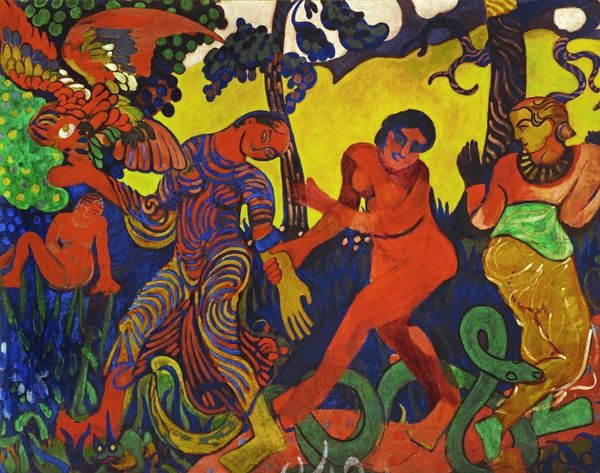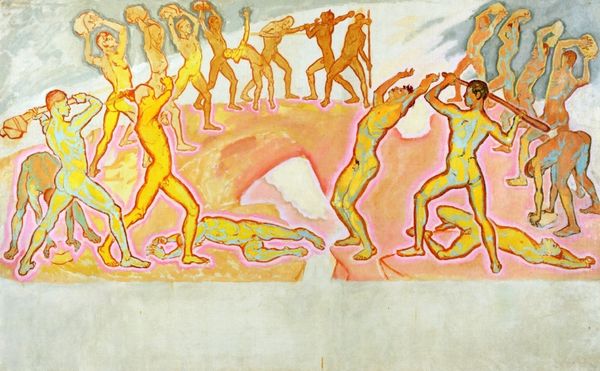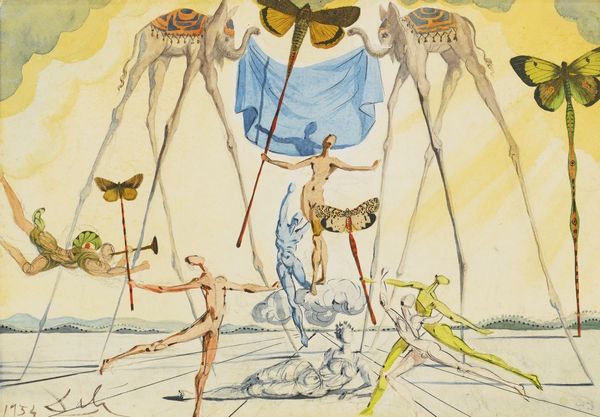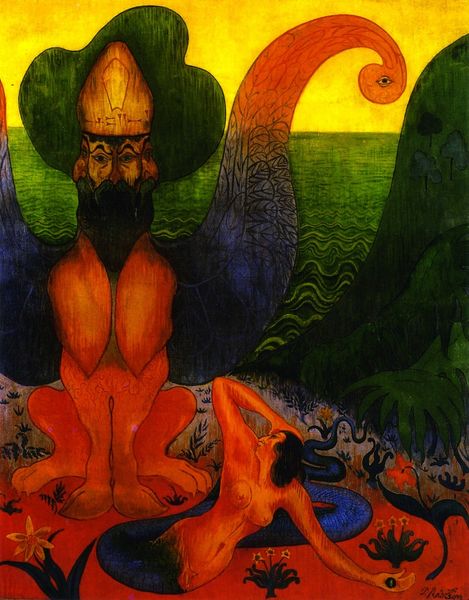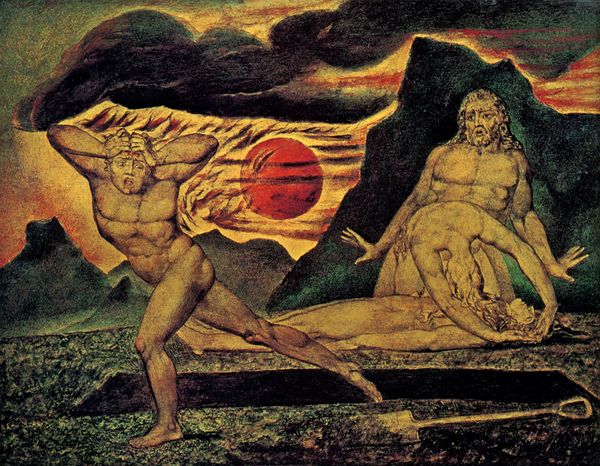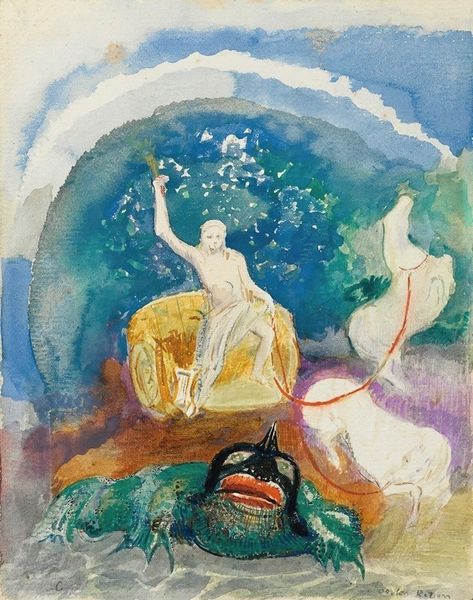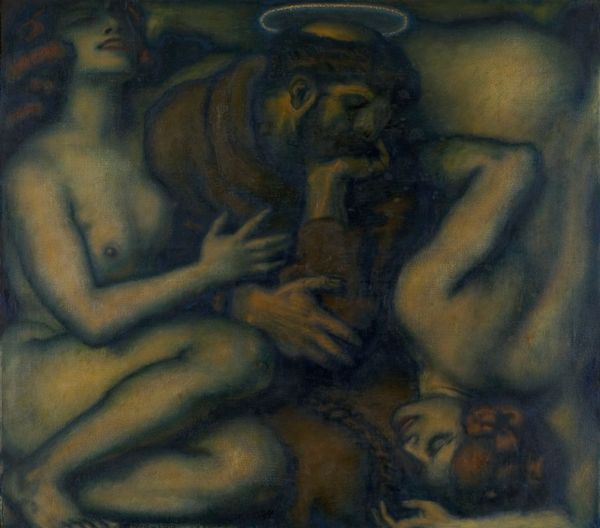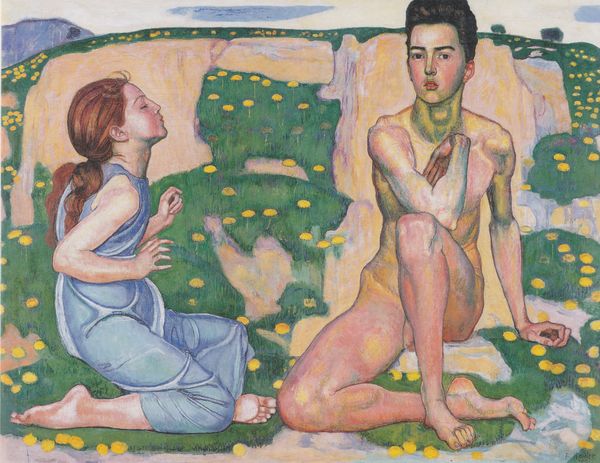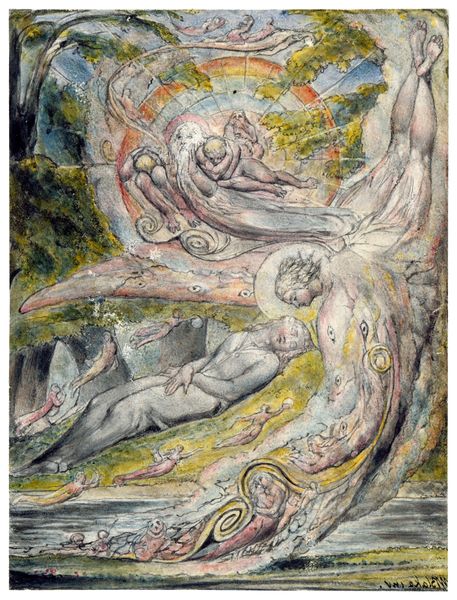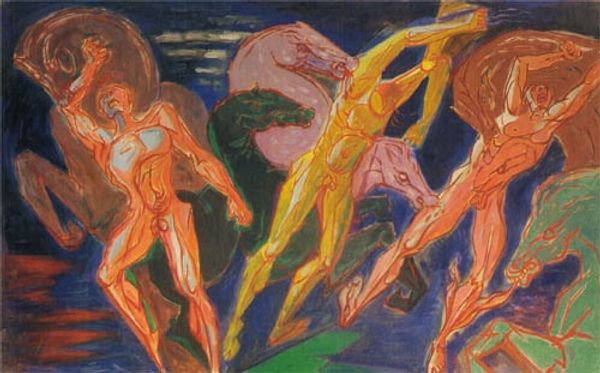
tempera, oil-paint
#
allegories
#
allegory
#
tempera
#
symbol
#
canvas painting
#
oil-paint
#
figuration
#
symbolism
#
nude
#
male-nude
Dimensions: 123 x 180.5 cm
Copyright: Public domain
Editor: This is “The Light” by Koloman Moser, painted in 1914. It looks like it’s oil paint or tempera on canvas. I find it kind of unsettling—the central figure seems almost cadaverous, but he’s holding a torch. What do you see in this piece? Art Historian: I see a potent allegory, charged with social and philosophical anxieties of its time. Given the year, 1914, looming world war surely inflected Moser's symbolism. Consider the male figures –one dormant, one prone– set against the central figure holding the torch. Who carries this light? To what end? Editor: So, it's not just about…light? It felt a bit simplistic to me at first. Art Historian: Simplistic, perhaps, on the surface. But let's unpack the visual language. The nude male, rendered in stark yellow against muted figures hints at broader discussions around modernity and the idealized body. Consider how social anxieties often manifest in allegorical figures such as these. It calls for deconstruction to appreciate it fully, doesn’t it? What does the light symbolize to you? Is it progress? Enlightenment? Or perhaps…destruction? Editor: I guess I was focused on the central figure as a beacon of hope, but you’re right; the two other figures do give off a kind of darkness. And given the context of the war, maybe the light is…not so positive. Art Historian: Exactly. By understanding the painting's historical moment, and examining the interplay of visual elements like the body and light, we unlock deeper interpretations. It becomes a mirror reflecting anxieties about progress, masculinity, and perhaps, even collective suicide. Editor: That’s a pretty bleak outlook! I initially thought it was just…a nude guy with a torch. But you’ve made me realize how many layers can exist under the surface. Art Historian: Art often functions as a seismograph. Moser's “The Light”, isn't simply aesthetic; it's a document reflecting deep-seated social currents, challenging us to critically engage with its visual and historical narrative. Editor: Thanks, that makes so much more sense now!
Comments
No comments
Be the first to comment and join the conversation on the ultimate creative platform.
